 A team of researchers has presented a new model for the origin of Saturn's rings based on results of computer simulations. The results of the simulations are also applicable to rings of other giant planets and explain the compositional differences between the rings of Saturn and Uranus.
A team of researchers has presented a new model for the origin of Saturn's rings based on results of computer simulations. The results of the simulations are also applicable to rings of other giant planets and explain the compositional differences between the rings of Saturn and Uranus.
Nov 15th, 2016
Read more
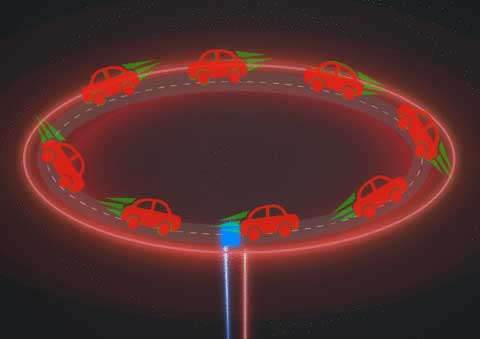 A new theoretical paper suggests that intentionally creating a 'traffic jam' out of a ring of several thousand ultracold atoms could enable precise measurements of motion. If implemented with the right experimental setup, the atoms could provide a measurement of gravity, possibly even at distances as short as 10 micrometers.
A new theoretical paper suggests that intentionally creating a 'traffic jam' out of a ring of several thousand ultracold atoms could enable precise measurements of motion. If implemented with the right experimental setup, the atoms could provide a measurement of gravity, possibly even at distances as short as 10 micrometers.
Nov 14th, 2016
Read more
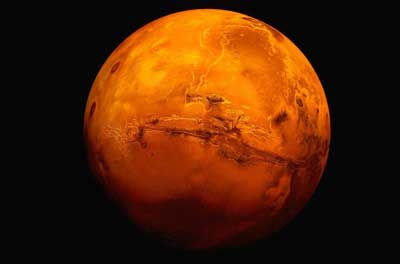 The lack of liquid water on the surface of Mars today has been demonstrated by new evidence in the form of meteorites on the Red Planet examined by an international team of planetary scientists.
The lack of liquid water on the surface of Mars today has been demonstrated by new evidence in the form of meteorites on the Red Planet examined by an international team of planetary scientists.
Nov 11th, 2016
Read more
 NASA, Space.com, Sky and Telescope magazine, observatories everywhere - just about any entity with a stake in the night sky - have been busy telling us how great the full moon will be Nov. 14 because the satellite will be closer to Earth than it's been for almost 70 years. But to the casual observer, the moon will look little different from any other full moon.
NASA, Space.com, Sky and Telescope magazine, observatories everywhere - just about any entity with a stake in the night sky - have been busy telling us how great the full moon will be Nov. 14 because the satellite will be closer to Earth than it's been for almost 70 years. But to the casual observer, the moon will look little different from any other full moon.
Nov 10th, 2016
Read more
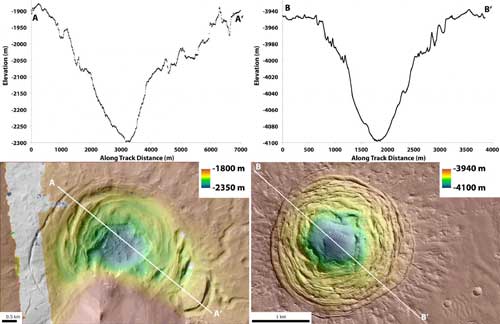 A strangely shaped depression on Mars could be a new place to look for signs of life on the Red Planet, according to a new study. The depression was probably formed by a volcano beneath a glacier and could have been a warm, chemical-rich environment well suited for microbial life.
A strangely shaped depression on Mars could be a new place to look for signs of life on the Red Planet, according to a new study. The depression was probably formed by a volcano beneath a glacier and could have been a warm, chemical-rich environment well suited for microbial life.
Nov 10th, 2016
Read more
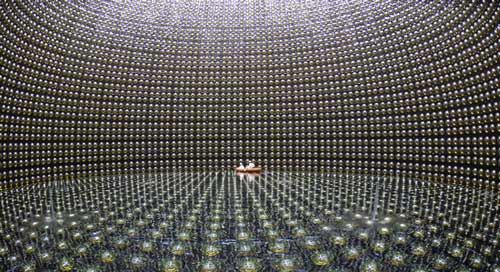 At the Super-Kamiokande detector in Japan, a new computer system has been installed in order to monitor in real time and inform the scientific community of the arrival of these mysterious particles, which can offer crucial information on the collapse of stars and the formation of black holes.
At the Super-Kamiokande detector in Japan, a new computer system has been installed in order to monitor in real time and inform the scientific community of the arrival of these mysterious particles, which can offer crucial information on the collapse of stars and the formation of black holes.
Nov 10th, 2016
Read more
 ESO's SPHERE instrument reveals protoplanetary discs being shaped by newborn planets.
ESO's SPHERE instrument reveals protoplanetary discs being shaped by newborn planets.
Nov 9th, 2016
Read more
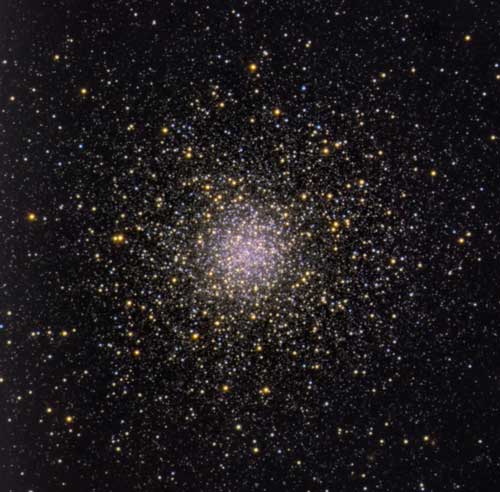 A study shows that the most massive stars in the last stages of their lives are those which contaminate the interstellar medium with new chemical elements, giving rise to successive generations of stars in these 'astronomical fossils'.
A study shows that the most massive stars in the last stages of their lives are those which contaminate the interstellar medium with new chemical elements, giving rise to successive generations of stars in these 'astronomical fossils'.
Nov 8th, 2016
Read more
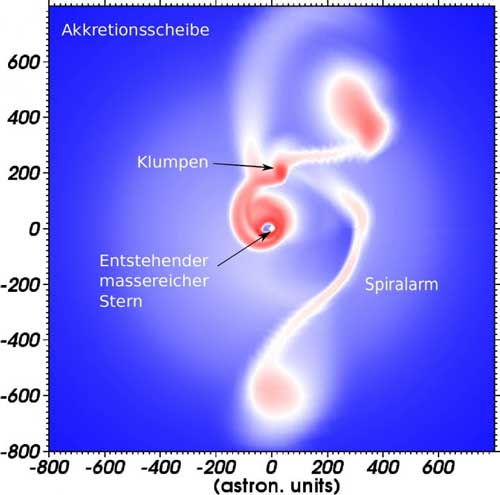 'How do massive stars form?' is one of the fundamental questions in modern astrophysics, because these massive stars govern the energy budget of their host galaxies. Using numerical simulations, researchers revealed new components of the formation of massive stars, which were already known from the formation process of low-mass as well as primordial stars.
'How do massive stars form?' is one of the fundamental questions in modern astrophysics, because these massive stars govern the energy budget of their host galaxies. Using numerical simulations, researchers revealed new components of the formation of massive stars, which were already known from the formation process of low-mass as well as primordial stars.
Nov 7th, 2016
Read more
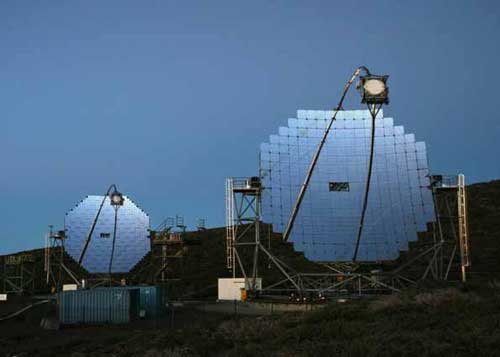 Never before have astrophysicists measured light of such high energy from a celestial object so far away. Around 7 billion years ago, a huge explosion occurred at the black hole in the center of a galaxy. This was followed by a burst of high-intensity gamma rays. A number of telescopes have succeeded in capturing this light.
Never before have astrophysicists measured light of such high energy from a celestial object so far away. Around 7 billion years ago, a huge explosion occurred at the black hole in the center of a galaxy. This was followed by a burst of high-intensity gamma rays. A number of telescopes have succeeded in capturing this light.
Nov 7th, 2016
Read more
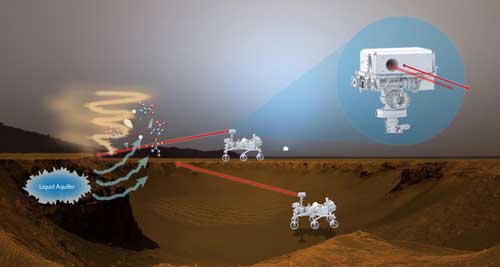 A sensing technique that the U.S. military currently uses to remotely monitor the air to detect potentially life-threatening chemicals, toxins, and pathogens has inspired a new instrument that could 'sniff' for life on Mars and other targets in the solar system - the Bio-Indicator Lidar Instrument, or BILI.
A sensing technique that the U.S. military currently uses to remotely monitor the air to detect potentially life-threatening chemicals, toxins, and pathogens has inspired a new instrument that could 'sniff' for life on Mars and other targets in the solar system - the Bio-Indicator Lidar Instrument, or BILI.
Nov 1st, 2016
Read more
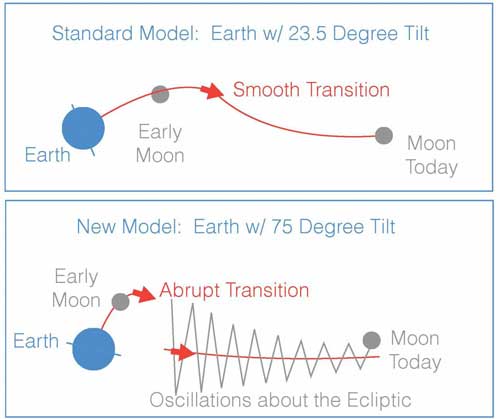 Simulations suggest a dramatic history for the Earth-moon duo.
Simulations suggest a dramatic history for the Earth-moon duo.
Oct 31st, 2016
Read more
 A team of researchers have presented a new model for the origin of Saturn's rings based on results of computer simulations. The results of the simulations are also applicable to rings of other giant planets and explain the compositional differences between the rings of Saturn and Uranus.
A team of researchers have presented a new model for the origin of Saturn's rings based on results of computer simulations. The results of the simulations are also applicable to rings of other giant planets and explain the compositional differences between the rings of Saturn and Uranus.
Oct 31st, 2016
Read more
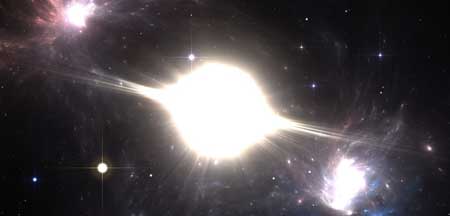 Five years ago, the Nobel Prize in Physics was awarded to three astronomers for their discovery, in the late 1990s, that the universe is expanding at an accelerating pace. Now, a team of scientists has cast doubt on this standard cosmological concept.
Five years ago, the Nobel Prize in Physics was awarded to three astronomers for their discovery, in the late 1990s, that the universe is expanding at an accelerating pace. Now, a team of scientists has cast doubt on this standard cosmological concept.
Oct 21st, 2016
Read more
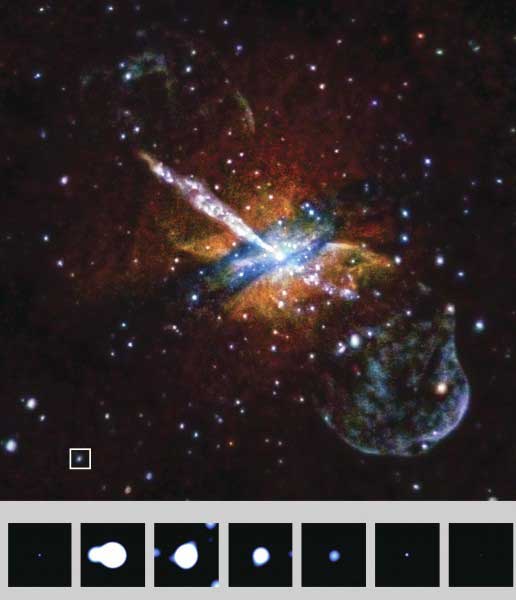 Space energy anomalies more than 50 million light years from our galaxy are creating conditions that should be destroying stars, but instead are regenerating them, according to astronomers.
Space energy anomalies more than 50 million light years from our galaxy are creating conditions that should be destroying stars, but instead are regenerating them, according to astronomers.
Oct 20th, 2016
Read more
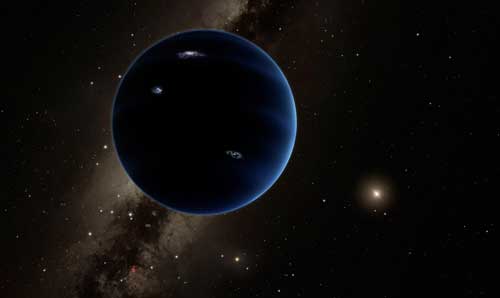 Planet Nine the undiscovered planet at the edge of the solar system that was predicted by the work of Caltech's Konstantin Batygin and Mike Brown in January 2016 appears to be responsible for the unusual tilt of the Sun, according to a new study.
Planet Nine the undiscovered planet at the edge of the solar system that was predicted by the work of Caltech's Konstantin Batygin and Mike Brown in January 2016 appears to be responsible for the unusual tilt of the Sun, according to a new study.
Oct 20th, 2016
Read more
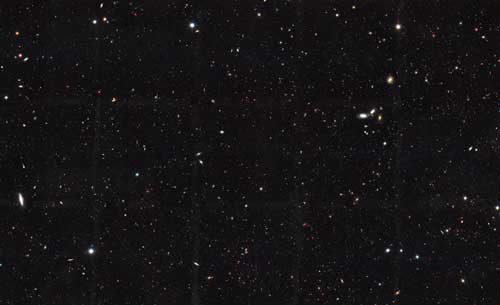 An international team of astronomers has found that the universe contains at least two trillion galaxies, twenty times more than previously thought.
An international team of astronomers has found that the universe contains at least two trillion galaxies, twenty times more than previously thought.
Oct 13th, 2016
Read more
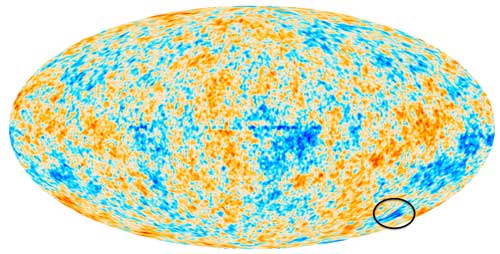 A team of astrophysicists have created the largest ever map of voids and superclusters in the Universe, which helps solve a long-standing cosmological mystery.
A team of astrophysicists have created the largest ever map of voids and superclusters in the Universe, which helps solve a long-standing cosmological mystery.
Oct 12th, 2016
Read more
 A team of researchers has presented a new model for the origin of Saturn's rings based on results of computer simulations. The results of the simulations are also applicable to rings of other giant planets and explain the compositional differences between the rings of Saturn and Uranus.
A team of researchers has presented a new model for the origin of Saturn's rings based on results of computer simulations. The results of the simulations are also applicable to rings of other giant planets and explain the compositional differences between the rings of Saturn and Uranus.
 Subscribe to our Space Exploration News feed
Subscribe to our Space Exploration News feed















